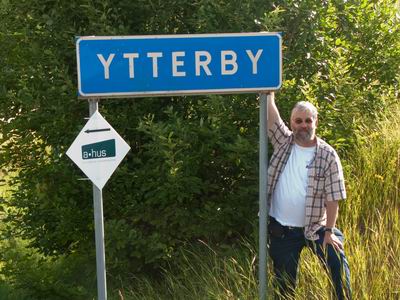
This is THE web site for element names. You will find this site useful not only for the origins (etymology) of element names, but also for translations of each element name into numerous other languages.
Peter van der Krogt mixes science, history, and etymology to create an exhaustive database of the elements. This site is fascinating and brings a human element to a table of symbols and numbers.
(Bionic Teaching)
I am not a chemist, but a (map) historian much interested in the origin of names. On several of the sites listing elements you will find historical notes and often an explanation of the origin of element names. However, mostly, the authors of these pages copy each other and the same errors and mistakes are repeated. I tried to do some new etymological research on the element names, and find the original articles where the discoverer of a new element announced his find and explained the naming. If you have remarks, corrections, additions, etc. please contact me.
Clickable Periodic Table
Move your mouse over it and the names of the elements appear in: English

for the history of Chemical symbols, how to spell Mendeleev, Sellars' Chemistianity, the naming of the rare earths, and much more you'll find under the 'Specials' tab.


Peter van der Krogt in Strontian (18 September 2004), the town where the element Strontium got its name from, and in Ytterby, Sweden (21 July 2009), the town where Erbium, Terbium, Ytterbium, and Yttrium got their name from (more photos here)
13 June 2016: Today I read in the newspaper four new elements were named. Time to update the site again. Earlier this year I Tom Sharp has read the whole text and has sent me many typos and other errors. I have corrected this. Further I made some changes in the elements in Russian and Esperanto. The last four year I received more additions and correction, I hope to add these in the near future.
22 October 2012: Despite the new structure I didn't have the time for updates. Today I added two newly named elements, Livermorium and Flerovium, and some small corrections were made.
January 2010: After a standstill of a few years finally a major update and a complete restructuring of the site. Because the pages are now programmed in PHP – thanks to my brother René van der Krogt – and the element data and languages are in a database, it will be easier to maintain the site in future.
31 December 2009: Several small changes and photos of the Ytterby Mine added.
29 December 2009: Element 112 named Copernicium.
3 May 2009: Work, work work, and another website take most of my time. I still have the intention to update the site. I am now planning to have the dictionary in a database structure, so it will be easier to update the site. .
Scientific data (chemical and physical) of the elements. There are hundreds of website presenting that information. A few of them: